DSB Fredericia |
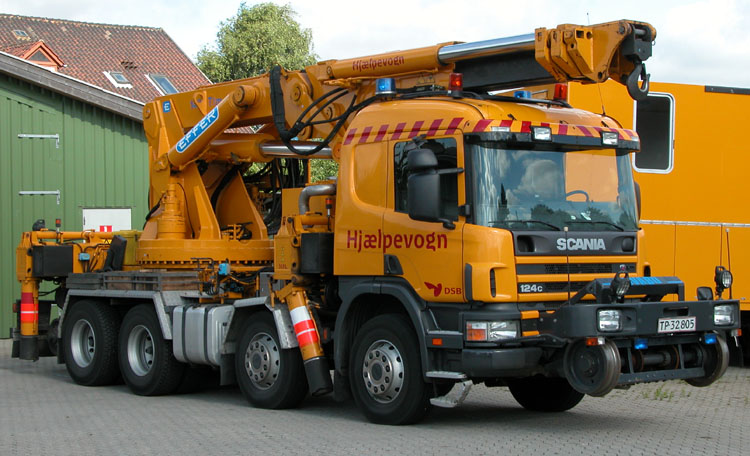 |
The DSB, the danish rail roads, have 2 of these special Scania’s for the recovery of derailed and crashed equipment. |
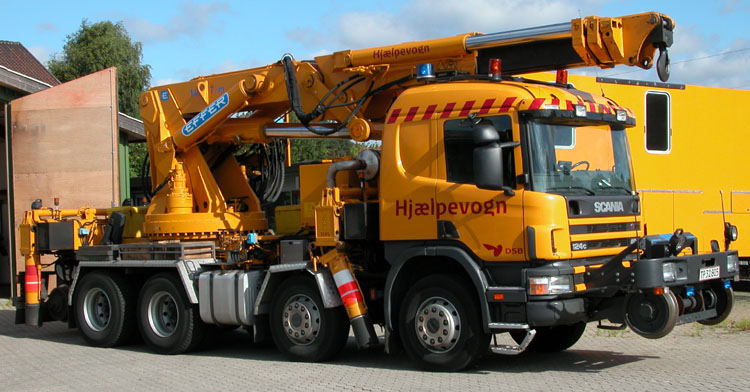 |
The base is a Scania P124C-400 8x4 chassis. The own weight of these trucks is almost 31 tonnes. |
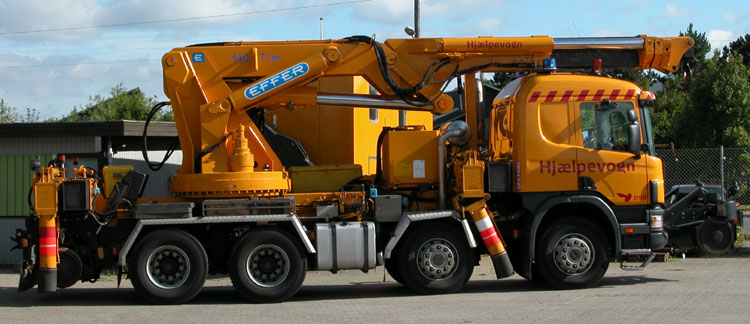 |
A Effer 140 TxM 3S is placed on this chasses, a predecessor of the current 2100 models. These cranes are also called the DSB 140. |
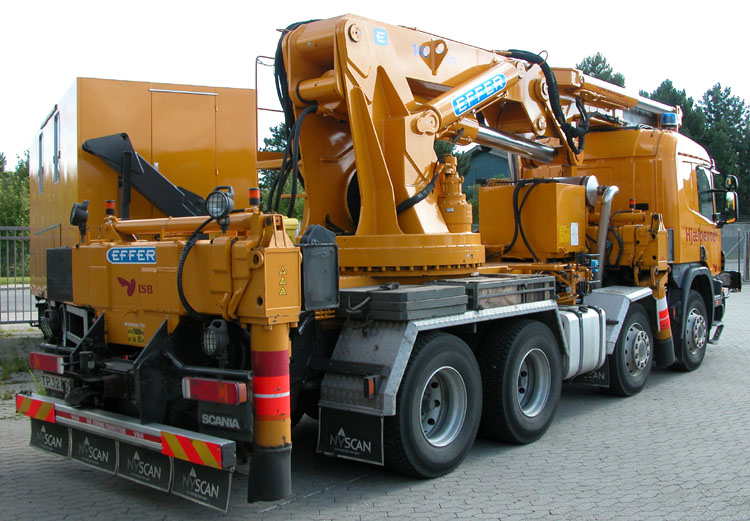 |
The DSB 140 is a crane with a maximum lifting capacity of 140 ton/meter.
Lifting tabel:
5,02 mtr: 27.000 kg
6,44 mtr: 21.500 kg
7,84 mtr: 17.800 kg
9,24 mtr: 14.000 kg
With a special manual extension the outreach can be enlarged to 12,34 mtr. Maximum load at this extension is 7.000 kg. |
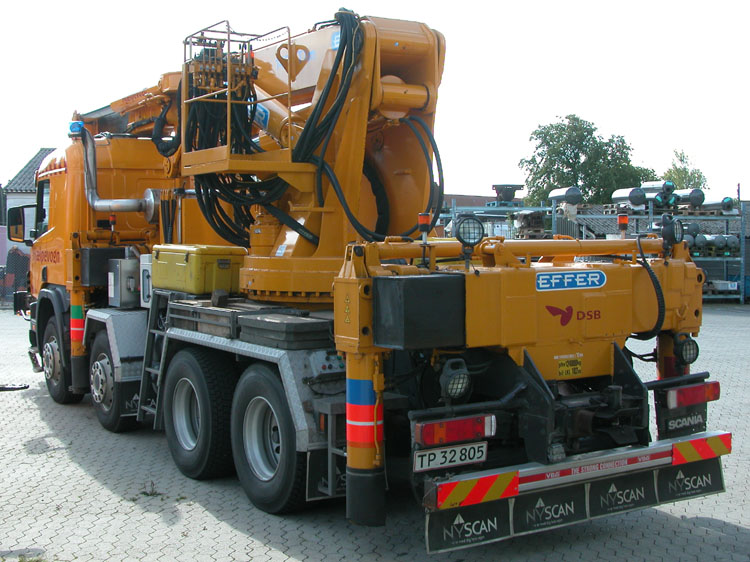 |
This Scania is the newest of the 2 and is stationed in Fredericia. It is delivered in 1999. |
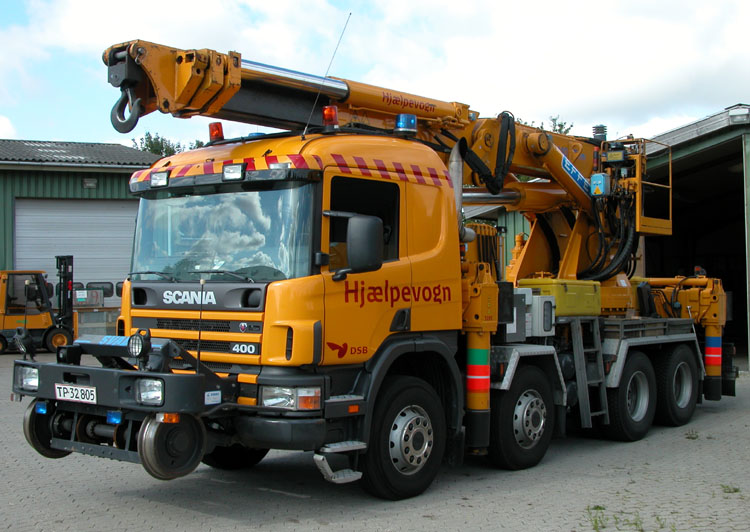 |
A conversion that makes these trucks suitable for the railroads is the 2-way unit. With this the truck can drive on the tracks. The axles are driven hydraulically and the maximum speed on the tracks is about 40 km/h. |
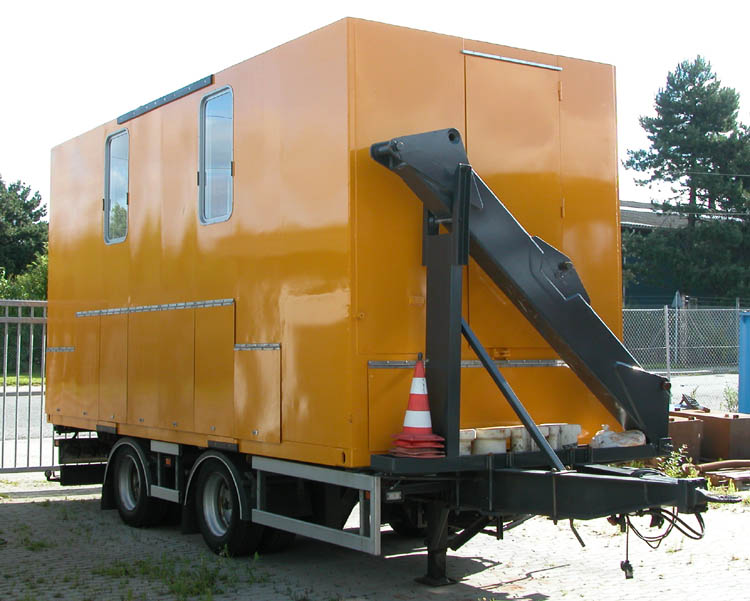 |
At bigger jobs they also take this trailer with them. The box is mounted on twistlocks an can be exchanged. The trailer also has a 2-way system so that it can be taken on the tracks aswell. In the box there is a hydraulic unit that, together with hydraulic jacks, can be used to lift very heavy trains. At the front of the trailer we see a spreader. This one has been made by Effer. It can lift 2 x 17.500 kg and can be used as a manual extension by mounting it to the front of the telescopic boom (see text at lifting tabel). This spreader is for instance used when a train has to be lifted by it’s wheels at the left and right side. |
DSB Copenhagen |
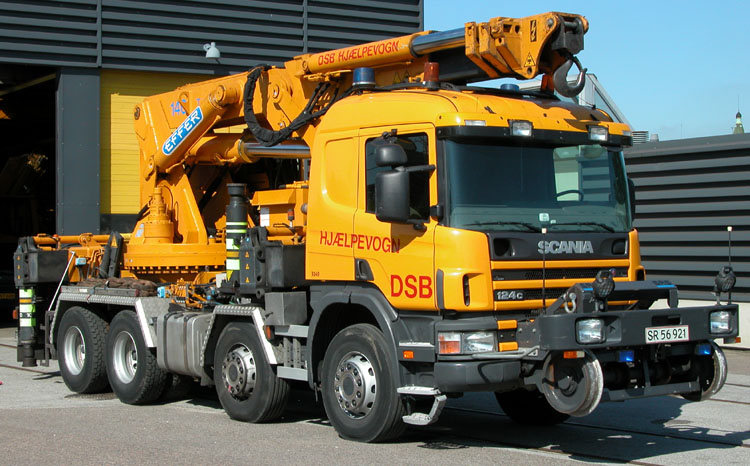 |
The first DSB 140 that was delivered is this one, it has been delivered in 1997. This one is stationed in Copenhagen. Here they also have, for the heavy jobs, a large 150 tons Gottwald railroad crane. |
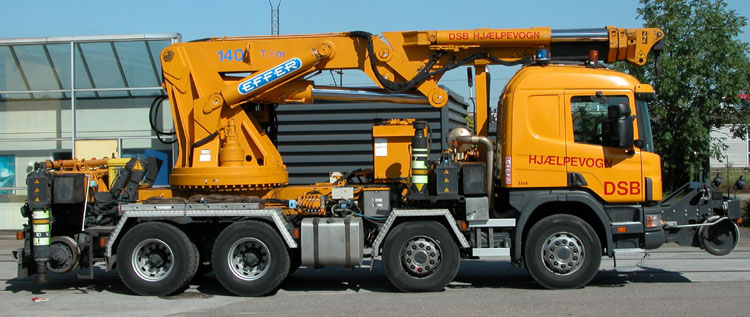 |
While, at the tracks, you don’t have so much space/height they don’t fold these cranes. Instead of that, they lay the boom down over the roof of the low P-cab. The telescopic cylinders have been placed beside the boom to save additional height (this features is also seen on the STR version of the 2100). |
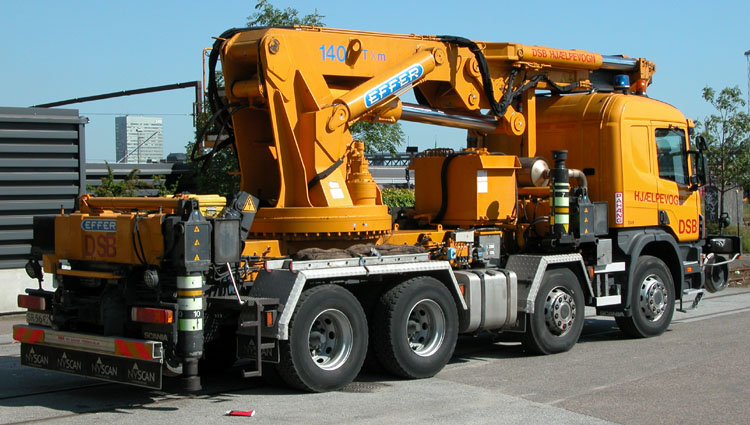 |
A small difference between this truck and the newer version is the front outrigger at this side. Here, the outrigger has to flip up, on the other truck it can be tilted between both axles. |
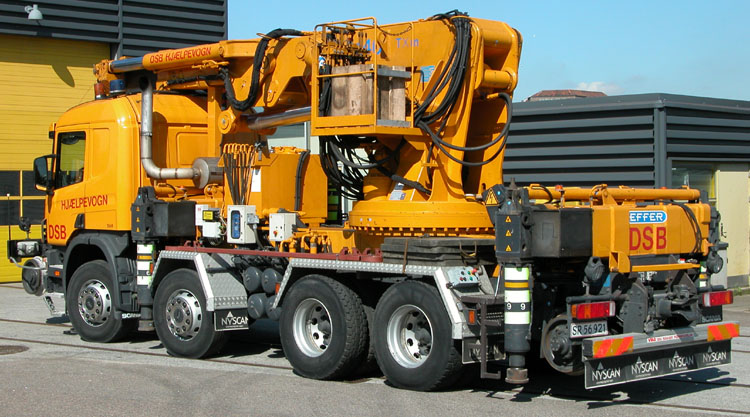 |
The exhaust system has also been changed because of a lack of space. A the back, just above the drawbar coupling, hangs a drawbar with which recovered cars can be pulled. |
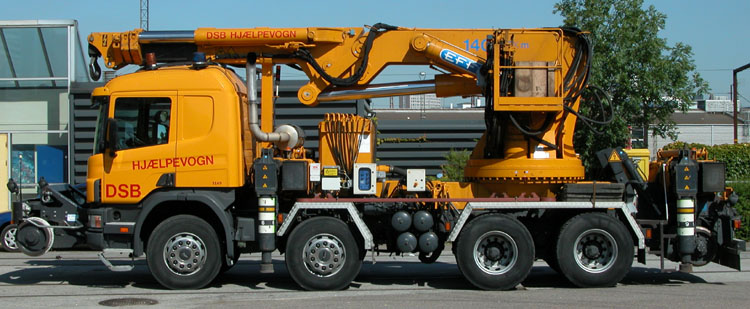 |
The 2-way system allows the truck to be at the place of the accident very quick. At first it will travel as much distance by road as possible, and will then enter the tracks at a railroadcrossing or a shunting-yard. This way the other rail traffic isn’t disturbed by it. Also, the truck is usually faster on the road than on the tracks. |
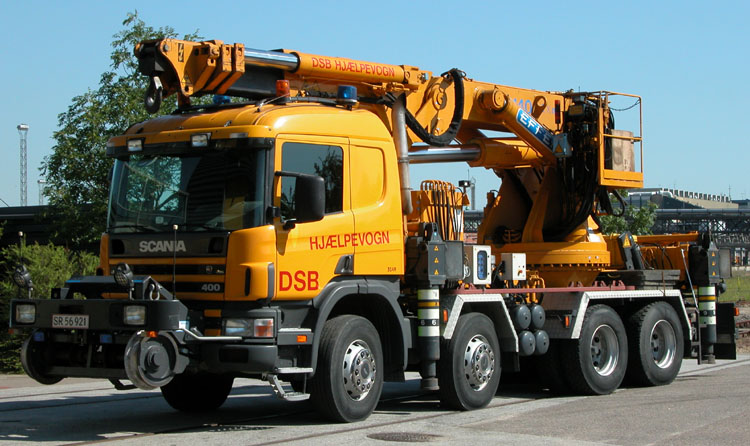 |
Two unique machines!! |
| |
| Back to the: Scania index / Effer index |